Tiger Island
Man Eating Tigers of Sumatra in the USA for Animal Planet

Hiding deep in the forests of an Indonesian island are some of the world’s most elusive big cats, Sumatran Tigers. As the last island tigers stray into the world of humans, many are killed or imprisoned. Now a controversial millionaire may save them. He’s releasing tigers accused of man-eating. The world’s leading big cat expert, Alan Rabinowitz, sets out to investigate. In his eyes, it’s like putting murderers whose rehabilitation is uncertain back into society and hoping they won't kill again. The experiment on Tiger Island may offer new hope for the world’s tigers, or it could spell disaster.
Only decades ago, three sets of island tigers roamed Bali, Java and Sumatra. The only one still existing today is the smallest and rarest of all: the genetically-unique Sumatran Tiger. And now it too is in critical danger.
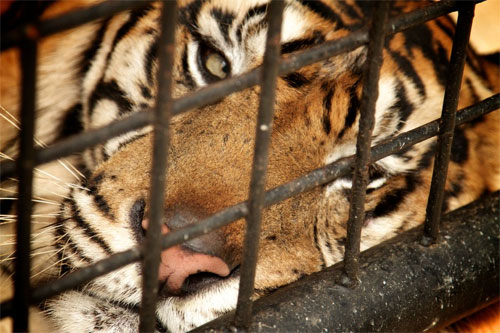
They are so rare that even how many remain is a mystery. Fewer than five hundred? As more of the forests of Sumatra are clear-felled, the amount of animals for the tigers to hunt is falling. Instead, growing numbers of people take their place. With chilling inevitability, the death toll among humans is rising.
Now tiger expert Alan Rabinowitz hears of a daring new project. Business tycoon Tomy Winata, a passionate conservationist, is attempting to give the killers a break. The maverick millionaire takes captured tigers to a place of safety. His aim: to release reformed man-eaters among remote communities. But will his ambitious plan work?
Alan sets out to find out. Does Tomy's safe haven offer the gift of new life or a death sentence for tigers and villagers? It’s a journey that takes the big cat expert to an exotic location few people have seen: his reward, the rare chance to see Sumatran tigers up close.
THE STORY TOLD IN THE FILM
Isolated on islands, animals evolve differently. The Sumatran tiger, the only remaining island tiger, is now the smallest in the world. It’s rarely glimpsed in its natural habitat, and virtually all film of it is taken in captivity. And now there may be fewer than 500 left. Alan Rabinowitz has spent his life tracking and studying big cats. He’s the Indiana Jones of Wildlife Protection – the most renowned field biologist in the world. Alan’s home base is New York. Panthera, the non-profit organisation he heads, carries out big-cat conservation across the globe.
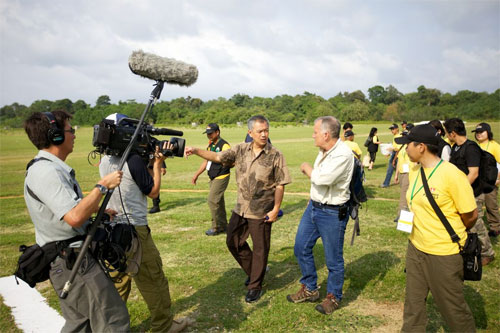
A bold experiment in Asia by an eccentric industrialist grabs Alan’s attention. Tomy Winata, and his many businesses from finance to property, thrive in a land where the forests are under threat. Yet Tomy risks releasing tigers blamed for deaths. Alan wants to meet the maverick millionaire.
In Sumatra, money grows on trees. Farmland replaces tiger territory. Conflict with humans ensues and both sides suffer losses. The tigers become victims of a zero tolerance policy. 265 Sumatran tigers have been killed …97 have been captured. That’s when the dilemma begins. What do you do with a captured man-eater?
Alan stops off at Sumatra’s Taman Safari Park, a gaol for man-eating and conflict tigers. The animals are imprisoned to safeguard their valuable genes for the future. But when Taman Safari is full, where can suspects go – tigers accused of terrible things, like the female, Panti? Panti was among a dozen suspects captured after a killing. The authorities had nowhere permanent to keep them. In the months of delay that followed, seven of the tigers died.
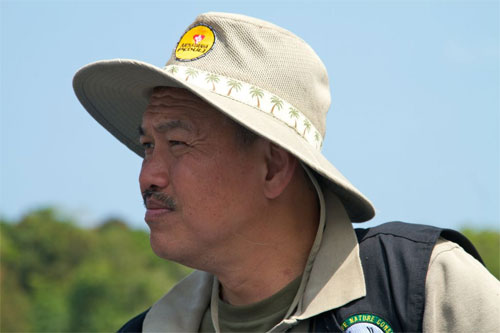
Rich, well connected, and with access to a secluded nature reserve, Tomy Winata took in Panti and four other survivors. From 1996 on, Tomy had helped the Government protect up to 170 square miles of land at the tip of Southern Sumatra). (450 sq. km) It’s bounded by sea on two sides and a National Park to the North. Tomy’s reserve is better protected from logging and poaching than some areas inside the neighbouring National Park.
Instead of condemning the captives to life imprisonment, Tomy is giving them a second chance. First he puts the prisoners into what he calls “rehab”. So far, he’s freed five alleged man-eaters onto his land – including Panti. He radio-collars them and monitors their movements - for good reason: 170 villagers live in the area where he releases these tigers. Alan’s big question remains: is it ever safe to release potential man-eaters near people?
Tomy still has more captive tigers. Alan is keen to discover which ones he might release next. As well as the single female, Panti, Tomy has released four males into his reserve. Male tigers released into new territories roam large areas looking for other males. If they find one, they may fight to the death. Females are the ultimate test of Tomy’s experiment. They are less likely to be driven off by resident males. But for the experiment to be successful, firstly, they mustn’t kill anyone. Next, they must find a new home, catch enough prey, and breed.
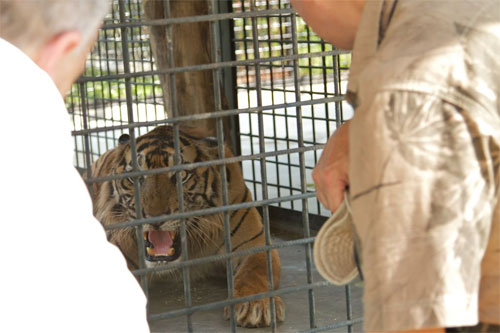
Unfortunately the data from the radio collars is missing. Alan becomes frustrated at the lack of hard facts. The five tigers released so far are not alone. Tomy believes there were already up to 30 tigers on his reserve. Resident tigers haven’t troubled people, but more incomers might tip the balance. Alan needs to know if any tigers Tomy’s freed recently remain close to the village. The most valuable tiger Tomy’s released is the female, Panti, because she’s old enough to breed. Finding her would be a significant advance. A tiger has been paying a visit to Tomy’s HQ. It’s a good opportunity for Alan to start to collect his own data, by mounting camera traps he’s brought with him.
Alan’s camera traps show the local track is also a tiger highway. Humans are using the same routes. And caught on camera is a tiger with its own home range, marking a tree and not attacking passers-by. But is it a tiger Tomy’s set free? Could this be ‘Panti’ - the lone tigress that survived the tiny holding cages? It turns out Panti has made her home here, living alongside Tomy’s workers, and leaving them well alone. Photographic evidence of a successful reintroduction is a breakthrough for both Tomy and Alan. The one thing the data reveals is that the released tigers spent a lot of time close to the village, before moving away. Tomy hopes the tigers released on his land will migrate into the neighbouring National Park and beyond, along green corridors to the North.
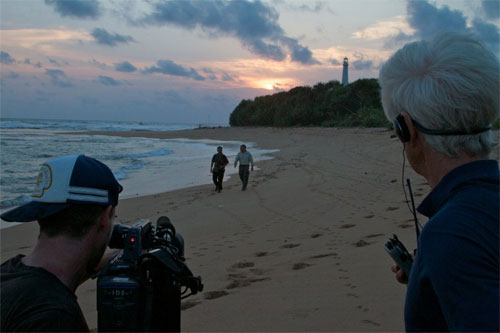
And there’s more news of the released female Alan’s identified - Panti. She’s seen with a wound to her paw. Tomy’s team take her back into captivity, to let her paw heal. Their reward is unexpected. She gives birth to a litter of cubs. Panti’s cubs are doing well and soon they and their mother will be released again. This more than any other evidence proves, as long as they are in protected areas, tigers previously caught up in conflict can be released without problems – and breed.
Tomy has spent over $20 million US in cash alone. His time and his people’s labour would triple that. For Alan that’s not an unreasonable sum. $30 to 50 million a year could save the tiger as a species. As a result of his investigation, Alan is optimistic about Tomy’s experiment and the tigers’ future. He believes the island offers enough wilderness for the Sumatran tiger to have a better shot at survival than most other races of tigers in the world.
TIGER ISLAND is a Mike Birkhead Associates film for the BBC2
series NATURAL WORLD.
The series executive producer is Chris Cole and series editor Steve Greenwood.
The film goes out on Thursday 26th July on BBC 2 at 8pm.
Producer Mike Birkhead
Associate Producer Joe Loncraine
Editor Matt Meech
Camera Graham MacFarlane
Sound Mark Roberts
Writer Jeremy Evans
Music Ben Wright
Progamme Manager Carolyn Naylor
Our Programmes